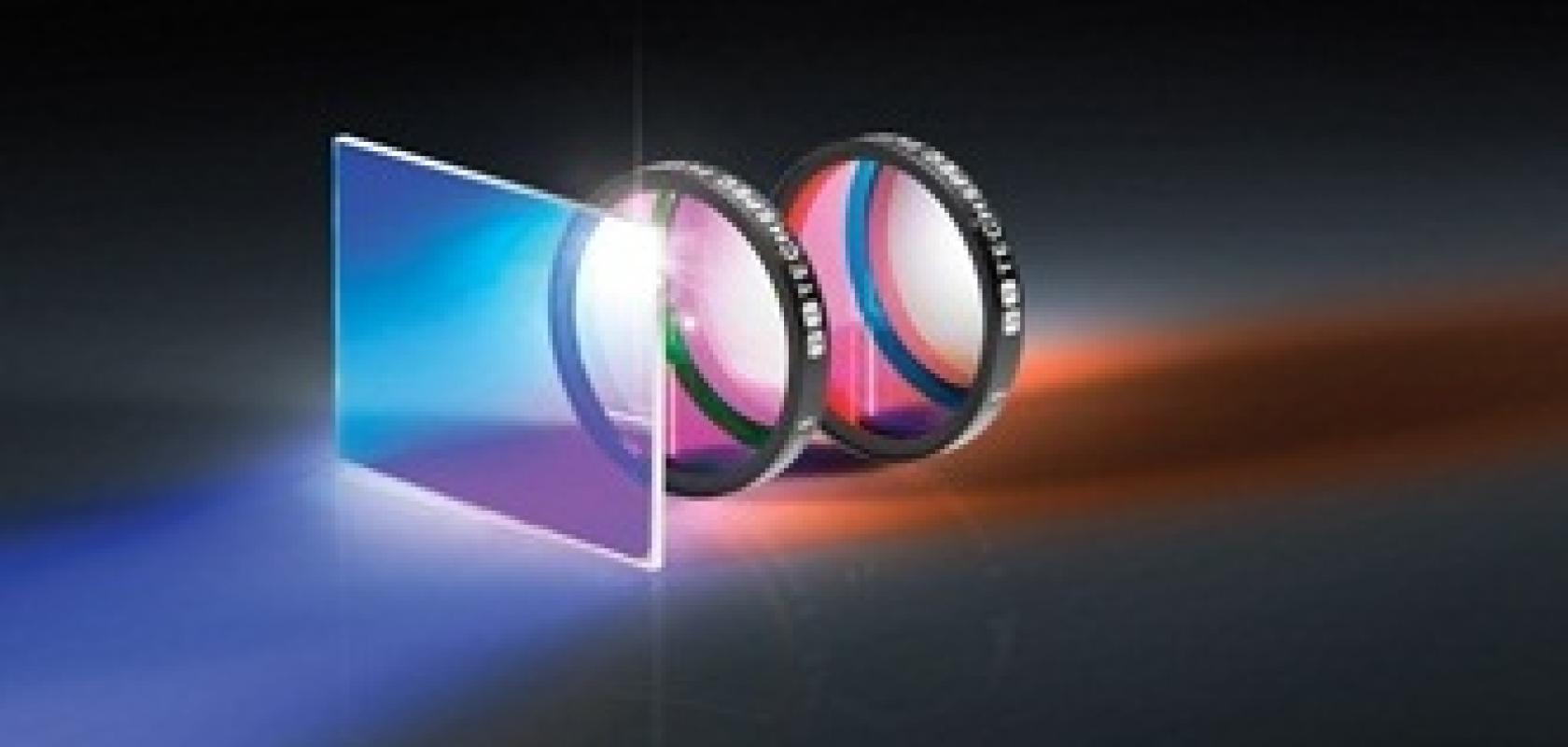All About Coatings

An Introduction to Optical Coatings
Just about two hundred years ago, Augustin Jean Fresnel developed a set of equations that defined the reflection of an electromagnetic wave from a dielectric surface. The amount of reflection depends upon the angle of incidence, the indices of refraction of the initial and final media, and the wavelength of the light. One consequence of his discovery, for example, is that about four percent of the visible light incident on a glass surface will reflect from that surface. Fresnel extended his discovery to incorporate an understanding of how it is that light can interfere with itself. That is, the wave nature of light means it can be split up and recombined in such a way that its intensity can be increased and decreased in particular regions.
Optical coatings are built on those two principles: that light reflects from the interface between two different dielectric materials and that two separate portions of a light beam can be manipulated to eliminate or reinforce its propagation in specific directions. Although these principles weren’t applied to coating an optical surface until about a hundred years after Fresnel’s work, the mathematics of the structure called “the quarter-wave stack” was independently generated several times. Through the years many industries experienced an improved performance resulting from optical coating, and the technique began a development phase that continues today.
The Quarter-Wave Stack
Anti-reflection coatings are simple in principle. Take the example of a single thin-film coating on a glass surface. Without any coating, about four percent of the light incident on the glass will be reflected, and that’s the end of the story. With thin film coating, just about that same four percent is initially reflected at the first surface. The remaining 96 percent transmits through the thin film to the surface of the glass substrate. Again, some fraction of that 96 percent is reflected from that interface. The specific fraction reflected at this interface depends upon the index difference between the thin-film material and the glass. The fraction reflected from the glass surface propagates back through the thin film.
The two beams — the one reflected from the thin film and the one reflected from the glass — recombine (Figure 1). Because of the wave nature of light (and details of the electromagnetic field), the two beams don’t add their intensities. Instead, they add their amplitudes. This means that one wave can cancel out the other, so that the net reflection goes to zero. Specifically, this happens when one wave is 180 degrees out of phase with the other. That’s the same as saying that the two beams are one-half-wave out of phase with one another. To meet that condition, the wave reflected from the glass must have travelled one extra half-wavelength before it recombines with the first reflected wave. This happens when the thin film is one-quarter wave thick. The beam travels one-quarter wave headed to the glass surface and one-quarter wave when reflected.

That puts the two beams perfectly out of phase, which means there is no reflection from the coated surface. Mathematically, this happens where the index of refraction of the thin film, times the thickness of the coating, equals one-quarter of the wavelength of light. That is, n * t = ¼λ. The interference effect can be reinforced with multiple layers, each a quarter-wavelength in thickness. That’s the structure called the quarter-wave stack, and it can reduce reflection to almost nothing, which means nearly all the light is transmitted through the optic.
Multiple Requirements, Multiple Layers
That’s a simple equation, but it doesn’t take long to introduce complications. First of all, this equation only works perfectly for a single wavelength of light. Second, it only works for light incident normally on the surface. In the real world, designers usually want an optic to work over a range of angles and a range of wavelengths. That means that real-world coatings often need to be more complex than a set of identical layers of thin film — sometimes far more complex, with dozens or scores of alternating indices of varying thicknesses. And that’s just for an antireflection coating. See Figure 2 for performance curves of Standard Broadband Anti-Reflection Coatings.

Figure 2: Standard Anti-Reflecting Coating Performance
Coatings can also be optimized in reverse, to maximize reflection, creating mirrors. Other specialized coatings can separate polarizations, block a specific wavelength, or reflect wavelengths above or below a given cutoff wavelength.
When requirements move beyond simple antireflection at a single wavelength and a single incident angle, the coatings grow in complexity, but coating design — and more importantly coating application technology — is now mature enough that challenging requirements are routinely met. Table 1 shows some examples of standard antireflection coatings.
Table 1: Standard Broadband AR Coating Performance (click to open in new window)
High Quality Coatings Need High Quality Substrates
The quality of an optical coating depends upon the degree of control over deposition rate, temperature, and other process parameters, but even the best-controlled process cannot make a high-quality coating on a poor-quality substrate. It all starts with material selection, which must be guided by the optical and environmental requirements. But the substrate material choice must also be made with an eye towards compatibility with the coating material. The choice of substrate material, however, is just the start.
The surface quality, subsurface quality, and cleanliness of the substrate all critically influence the quality of the final coating. This is crucial for high-power coatings, where any material defect is likely to absorb laser energy, heat up, and lead to catastrophic failure of the coating. Process control is as important for substrate preparation as it is for the actual coating. To produce a superior substrate through the machining, grinding, and polishing steps, technicians must understand the effects of parameters such as tool speed, coolant flow, and grit and polish progression.

It almost goes without saying — except that it can be overlooked — that cleanliness is also of paramount importance. Any contaminant between the substrate and the initial coating will degrade (perhaps catastrophically) the coating quality. But cleanliness is not only a concern in substrate preparation, it’s also crucial within the coating chamber itself, to avoid the deposition of unwanted organics and particulates.

Reaching Peak Performance for Your Optics
Without optical coatings, multi-element lenses would be nearly useless because the light you need to form the image would be reduced, and the unwanted reflected light would be increased. But coatings don’t only improve the performance of traditional lens designs; they also enable entirely new classes of optical elements, such as notch filters, bandpass filters, polarization beamsplitters, and more. This is true not only for the dielectric coatings described here, but for organic and metallic coatings. It’s almost impossible to imagine a modern optical system that doesn’t rely on optical coatings to achieve its goals. So if you’re developing an optical system, you’re going to need coatings.
To maximize the performance of your system, you want to consider coating requirements early in your design process. Edmund Optics’ end-to-end optical expertise can help optimize the capability of your system, right from the start. Our designers can help you evaluate your system requirements, ensuring that your optics do what they need to do without being over specified. With tailored specifications in hand, Edmund Optics’ engineers can apply the full range of solutions to your design problem. We can select the substrate, the coating materials, and the process parameters to deliver the performance you need as economically as possible. Our expertise in every aspect of component fabrication and coating means that you will get peak performance from every optic — whether you choose from our extensive catalog of stock items or your specialized requirements lead you to a custom design.


